Here’s a list of the most Deadly Plants that you have to avoid growing in your garden if you have kids, pets, or livestock.
Check out some highly toxic plants for dogs here
If you have young ones, pets, cattle, or frequent visitors who don’t know much about plants, it’s better to be extra careful with what you’re planting because these plants can even kill!
1. Deadly Nightshade

Botanical Name: Atropa belladonna
We all know that the nightshade family has many edible plants like eggplants, tomatoes, potatoes, and peppers. But this one is not! Deadly Nightshade has been used in making poison for centuries now. The name gives a fair warning, as the berries and the foliage are highly poisonous.
What it Does: According to the Missouri Botanical Garden, touching this plant can be harmful, particularly if you have wounds or cuts. It is best to wear gloves while handling the plant.
All parts of the plants are toxic as leaves, fruits, and roots contain hyocyamine, scopolamine, and atropine that are responsible for anticholinergic toxicity. The purple-black berry poisoning can include dilated pupils, vomiting, hallucinations, rapid heartbeat, delirium, and death.
Is Wandering Dew toxic to your pets? Check out here
2. The Manchineel Tree

Botanical Name: Hippomane mancinella
Another deadly plant that you should instantly kill is Manchineel Tree. It belongs to the tropical northern South America to southern North America.
What it Does: This is considered the world’s most poisonous tree, with the most toxic fruit called Manchineel Beach Apple. Once eaten, it tastes spicy, then causes a burning, tearing sensation in the mouth, and then causes tightening of the throat, which causes the inability to swallow in a person.
The tree produces leathery, lustrous, elliptic, yellow-green-colored leaves, and the smoke that comes from burning is so toxic that it can irritate your eyes and cause skin inflammation. Also, it produces a milky sap that can ooze out from the twigs, bark, fruits, and leaves and can lead to severe blisters on your skin and even kill if you stand or sleep under the tree when it rains. Do not even touch this harmless-looking tree, or you will have to visit the hospital.
3. Easter Lily

Botanical Name: Lilium longiflorum
Trumpet Lily, famous as the most massive part of Easter decorations, is dangerous, especially for your cats. Even if your pet ingests the flowers or foliage in a small amount, it can cause acute kidney failure and death.
What it Does: All parts of the Easter Lily plant are toxic due to the Methylxanthines and cause acute kidney failure and possibly death for cats who love to munch on Easter Lilies. It is advisable to keep your children away from these lillies, too.
Do you Want to know if Rosemary is Toxic to Cats? Click here
4. Lily-Of-The-Valley

Botanical Name: Convallaria majalis
Many gardener’s favorite and traditional wedding flower, the Lily of the Valley, contains toxic substances in heavy amounts that can cause death to humans and animals. It can also become a problem because the beautiful flowering plant is highly invasive.
What it Does: All plant parts such as roots, bulbs, stems, flowers, leaves, and berries are toxic as the plant contains more than 35 cardiac glycosides that can stop the heartbeat. It is dangerous for pets and children, but even an adult can die due to the ingestion of any plant part.
Also, it can cause severe dermatitis when touched a lot.
5. Oleander

Botanical Name: Nerium oleander
Oleander is grown across the highways, in backyards, and almost everywhere in hot areas, but it is one of the deadliest garden plants in the world. Do not burn it, as the smoke is highly toxic, and inhaling it for a long can cause death. Consuming any part of this deadly plant, even in small amounts can be fatal, particularly for children.
What it Does: All parts of the Oleander are toxic because of the cardiac glycosides such as oleandrin, digitoxigenin, olinerin, and nerin. Even eating a single leaf can take a child’s life, so beware of this plant.
According to Colorado State University–“The lethal dose of the green oleander leaves for cattle and horses has been found to be 0.005% of the animal’s body weight. The minimum lethal dose of oleander for cattle was found to be 50mg/kg body weight. Horses have given 40mg/kg body weight of green oleander leaves via nasogastric tube consistently developed severe gastrointestinal and cardiac toxicosis.”
6. Rosary Pea
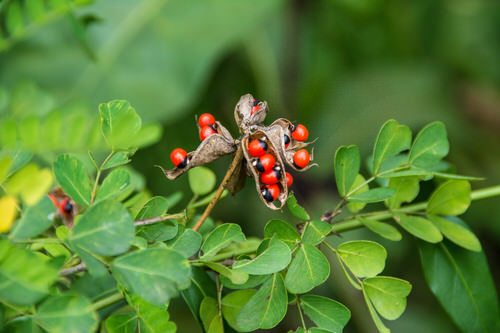
Botanical Name: Abrus precatorius
Rosary Pea may sound very pious, but it is poisonous in reality. It is famous for its use in making beads for rosaries and other ornamental jewelry across the globe. The seeds contain a poison called Abrin, one of the fatal ones on the planet.
What it Does: Rosary Pea contains a natural poison called Abrin, similar to Ricin that you can find in the seeds of this plant. The initial symptoms of poisoning by inhalation begin within 5-8 hours of exposure, but it may take 18-72 hours to prove fatal. The symptoms can start in a few hours but prove fatal in 5-7 days when ingested.
The symptoms include fever, cough, difficulty in breathing, nausea, chest discomfort, and heavy sweating that may turn into pulmonary edema and cause death.
7. Giant Hogweed
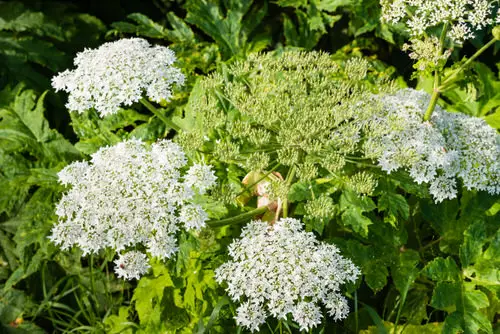
Botanical Name: Heracleum mantegazzianum
Did you know that it is a criminal offense to plant Giant Hogweed in the UK? Giant Hogweed looks pretty cool, but you should know that the sap of this plant is highly poisonous. Many children die every year because of this deadly plant.
What it Does: It contains poisonous chemicals called photosensitizing furanocoumarins. When it comes in contact with human skin, it can lead to an acute skin reaction that is also highly sensitive to light.
Giant Hogweed poisoning can lead to blisters on your skin, even on touching. One can go blind if the sap comes into contact and enters the eyes. Also, entering the human blood system can lead to a painful and quick death.
8. Doll’s Eye
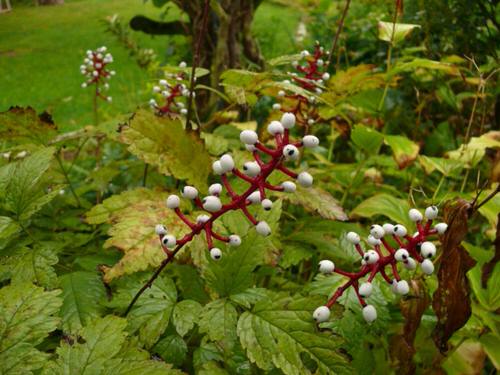
Botanical Name: Actaea alba
Doll’s Eye’s berries look creepy and are also fatal enough to kill you. However, the berries are entirely harmless to birds.
What it Does: Doll’s Eye produces toxic berries that contain cardiogenic toxins. It can affect human cardiac muscle tissue, making it one of the most toxic plants. The berries, when ingested, can cause cardiac arrest almost immediately.
9. Gympie

Botanical Name: Dendrocnide moroides
Gympie is also called Dendrocnide Moroides and belongs to northeast Australia. The plant loves to thrive in lush green spaces and does not look poisonous. Again, looks can be deceiving, so keep in mind that just one brush up against the foliage can make you feel excruciating pain and cause a quick death.
Even if you are near this deadly plant, it can cause nose bleeding and eye irritation.
What it Does: The painful neurotoxin in Gympie works through its tiny hairy filaments that cover the leaves, stems, and fruits. Mere contact with this leaf can lead to human death or extreme pain for months. The stinging leaves can even trigger anaphylactic shock.
Wondering if Spider Plants are poisonous to cats? Read on to know more here.
10. Tansy
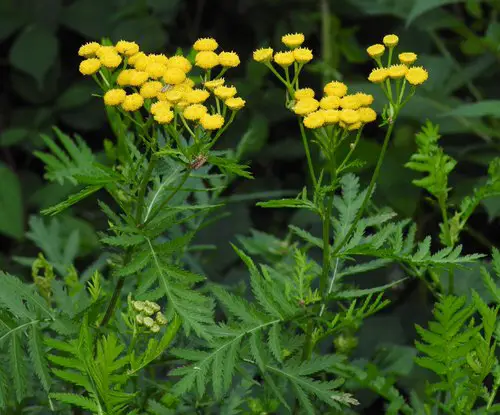
Botanical Name: Tanacetum vulgare
Once upon a time, Tansy was a valuable herb, but now it has fallen from grace. Many people grow this perennial for the golden, pretty flowers that look like buttons. However, livestock growers fear this deadly plant as it is also poisonous to animals and humans.
What it Does: Tansy plant contains a toxic chemical called Thujone. According to reports, as little as 10 drops of tansy oil have killed people, and even tansy tea or powder is known to kill many.
The symptoms include weakness, lethargy, walking in circles, difficulty in standing, staggering, jaundice, fever, gastrointestinal disorders, and death.
11. Rhododendron & Azalea
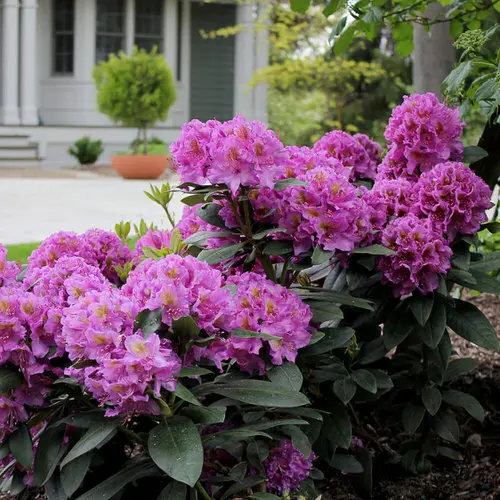
Botanical Name: Rhododendron
Azalea and Rhododendron are other fascinating, gorgeous blooms that look Instagram-perfect but only over a charming fence. The plant is intensely toxic, and consuming a leaf or a stem can cause abdominal pain, paralysis, respiratory problems, coma, and even death.
What it Does: The flower and leaves of Azalea and Rhododendron contain a toxic substance called Grayanotoxins that can prove to be fatal if ingested.
Pets and children should be kept away from the plant as the symptoms can include vomiting, nausea, salivation, dizziness, weakness, loss of balance, and death due to respiratory failure.
12. Angel’s Trumpet
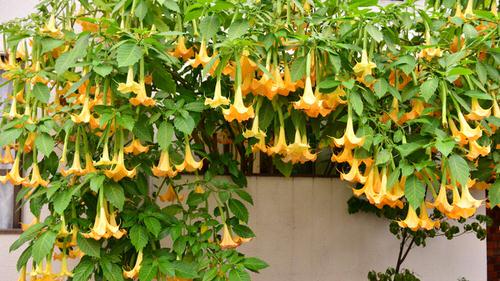
Botanical Name: Brugmansia
With pendulous blooms that hang resembling bells, Angel’s Trumpets are bushes with woody stems and look attractive in any garden. However, each and every part of this plant is acutely toxic as it contains a dangerous level of poison that may be lethal if eaten by animals or humans.
What it Does: All parts of Angel’s Trumpets are dangerous as they contain deadly substances like scopolamine, atropine, and hyoscyamine. If you ingest any part of the plant, it can cause paralysis, disturbing hallucinations, memory loss and can be lethal.
13. Cerbera odollam Tree
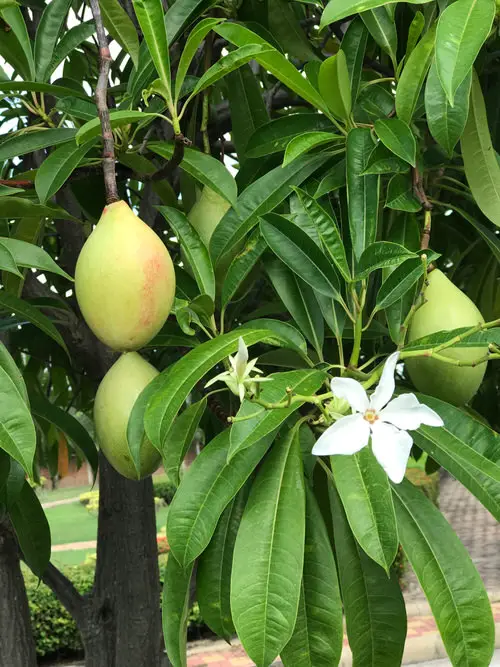
Botanical Name: Cerbera odollam
Cerbera odollam Tree is also known as the Suicide Tree. It is not only familiar in suicide cases but also in murders. Just a few seeds added to any food or beverage can poison the entire dish to a fatal degree.
It is challenging to detect the poison in most toxicology tests. It causes a slow and painful death with diarrhea and stomach cramps.
What it Does: This poison-rich plant contains a bioactive toxin called Cerberin, which is also a cardiac glycoside of the cardenolide class.
When ingested, the poisoning symptoms include vomiting, nausea, thrombocytopenia, hyperkalemia, ECG abnormalities, and even death.
14. Castor Beans

Botanical Name: Ricinus communis
Castor Beans are loaded with one of the world’s most toxic substances called Ricin. They are often grown in public parks and other areas for their excellent looks. One single castor bean is enough to kill a child in just a few minutes.
What it Does: Castor Beans contain Ricin, and if you swallow or chew the beans, the ricin can lead to fever, cough, kidney failure, convulsions, diarrhea, nausea, respiratory disorders, heavy sweating, and pulmonary edema that may be fatal.
15. Water Hemlock
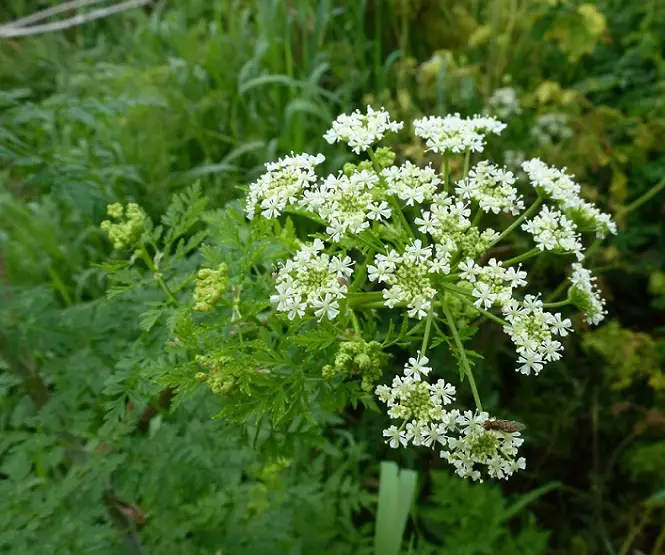
Botanical Name: Cicuta
Water Hemlock is closely related to Poison Hemlock, one of the most intensely toxic plants in North America. This large wildflower from the carrot family is also confused with celery or parsnips. However, Water Hemlock is filled with poisonous cicutoxin that can cause death if ingested.
What it Does: Cicutoxin is present in every part of Water Hemlock and the roots contain the highest concentration. If you ingest 2-3 cm of the roots accidentally, you can experience nausea, vomiting, wheezing, sweating, dizziness, stomach pain, lethargy, delirium, uncontrollable bowel movements, and death.
16. Monkshood
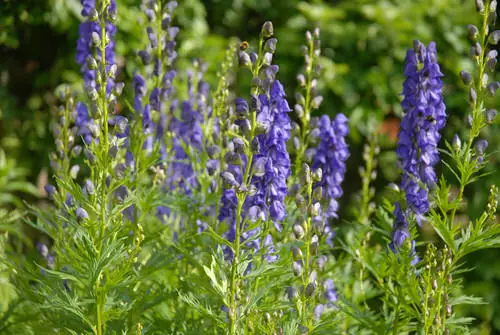
Botanical Name: Aconitum
Monkshood has been known as a deadly plant for many centuries now. Even ancient warriors used to plan out many executions involving this toxic plant. A gardener in the UK died of multiple organ failure after brushing past this poisonous purple flowering plant in 2014.
What it Does: Monkshood contains a neurotoxin: aconitine, and medaconitine, which is the main alkaloid in most species of Monkshood. The neurotoxins in Monkshood can cause cardiac problems and severe respiratory troubles that can get absorbed through the skin. Do not pick or handle this plant without wearing gloves, particularly the roots.
17. Larkspur
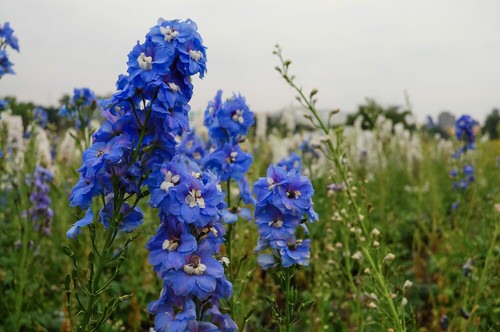
Botanical Name: Delphinium
Larkspur is both poisonous to animals and humans. The young plants and the seeds, if ingested, can lead to paralysis, respiratory distress, and death. Larkspur is also responsible for substantial livestock casualties in the United States.
What it Does: Larkspur contains toxic chemicals called alkaloids (nitrogen-containing hydrocarbons) that the plant produces and accumulates in leaves, seedpods, flowers, and seeds.
The poisoning symptoms, when ingested can impact cattle and humans, including straddled stance, muscular weakness, trembling, sternal recumbency, respiratory disorders, and death.
18. Foxglove

Botanical Name: Digitalis
The Foxglove’s flowers, seeds, leaves, and stems are toxic. The berries and flowers both attract children and they both can be fatal. So, this is another beautiful flowering plant that should be kept out of reach of your pets and children.
What it Does: If someone eats any part of this plant, the digitalis and cardiac glycosides present in the plant affect the heart’s function, resulting in an irregular heartbeat, headache, confusion, blurred vision, and death.
Additionally, foxgloves are also toxic to touch, and though you may not necessarily experience any reaction, the poison can be transferred to the mouth, eyes, nose, or an open wound that can also cause the poisoning symptoms and death. Wear gloves always when taking care of Foxgloves.
Read our Article on Deadly Flowers here!
19. Melia Azedarach
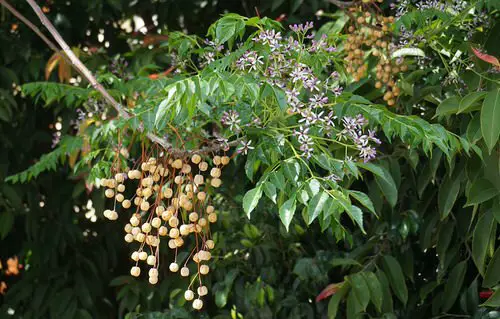
Botanical Name: Melia azedarach
Melia Azederach is also called the White Cedar. This deciduous tree that belongs to the mahogany family is also called the Chinaberry Tree, Umbrella Tree, Pride of India, and Persian Lilac. The fruits contain a mix of poisons such as neurotoxins so potent that as little as 5-6 berries can kill a human. However, they are not poisonous to birds.
What it Does: All parts of the White Cedar are deadly as they contain limonids that are classified as Meliatoxins, the highest concentration is found in the berries. The poisoning symptoms include diarrhea, lethargy, nausea, vomiting, confusion, seizures, coma, and death.
20. Tobacco

Botanical Name: Nicotiana tabacum
Tobacco is one of the most popular commercial non-food plants grown in the world. All parts of this plant, particularly the leaves, contain anabasine and nicotine, which are lethal when eaten.
What it Does: Nicotine is a natural poisonous substance that is found in tobacco products, but it is the same chemical that also makes tobacco products addictive. Tobacco companies are known to add ammonia compounds to cigarettes to mask the harshness of tobacco during the manufacturing process. This makes it feel “smoother” when smoked.
Chewing its raw leaves can make you feel nauseous, vomit, abdominal pain, sweat, increase in heart rate and blood pressure, hyperpnea or heavy breathing, and death.
The lethal dose of nicotine when inhaled is 50-60 mg/kg in an adult, according to the National Institute for Occupational Safety and Health. When chewing or swallowing, tobacco can lead to sweating, drowsiness, shaking, confusion, vomiting, seizures, and may even be fatal.



Thanks for the valuable, and explicit info…I am constantly telling people to quit planting oleanders on school grounds. It is used all over the RGV because it is cheap and fast growing.
wow! thx 4 making this website, it’s really helpful to me when I work on my novel!